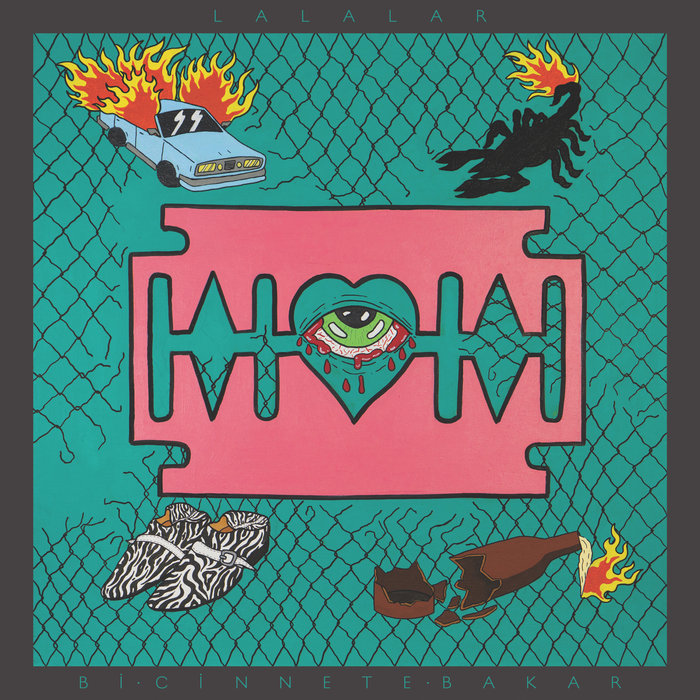
Abla Deme Lazım Olur – Lalalar
this blog is GROOVY – check out great Soul, Funk, Jazz, Hip Hop, Bass, Breaks , Reggae, House n many more TUNES
Anatolian Rock is like that cool uncle at a family reunion—eclectic, full of stories, and always ready to get the party started. Born out of Turkey in the late 1960s and early ’70s, this genre is a spicy fusion of traditional Turkish folk music with Western rock influences. Grab your air guitar, and let’s jam through its colorful history!
The roots of Anatolian Rock can be traced back to the rich cultural tapestry of Turkey. Imagine travelers from ancient times bringing their tunes along dusty roads that weave through mountains and valleys. By the time we hit the ’60s, Turkish youth were yearning for something new—a sound that reflected their identity amidst political upheaval.
It was during these turbulent times that artists began blending traditional instruments like bağlama (a type of lute) with electric guitars and drums. This fusion created a vibrant soundscape full of passion! Pioneers such as Barış Manço and Cem Karaca emerged on the scene like musical superheroes.
Barış Manço wasn’t just a musician; he was an entire vibe! Often referred to as “the father” of Anatolian Rock, his career spanned more than three decades. One amusing fact? He once recorded songs while dressed in various outfits—from classic rock attire to flamboyant suits reminiscent of an eccentric Ottoman sultan! His hit song “Dağlar Dağlar” lifted spirits all over Turkey like helium balloons.
Manço also had this wild talent for storytelling in his songs—combining catchy melodies with tales ranging from love to folklore. You could say he gave us both ear candy AND brain snacks!
Then there’s Cem Karaca—the rebel who couldn’t be tamed! This man was known for his powerful voice and even stronger opinions about societal issues in Turkey during political turmoil.
Fun little tidbit here: one time he went into exile due to his outspoken lyrics criticizing the government—and came back sporting an impressive beard as if saying “I’ve been living life on my own terms!” In fact, when he returned after years abroad, fans barely recognized him because he’d traded in his clean-cut look for what can only be described as ‘rockstar hermit chic.’
As we grooved deeper into the 1970s, Anatolian Rock really caught fire! Bands began springing up all over—like mushrooms after rain—with groups such as Moğollar, Kardinal Sin, and even Erkin Koray taking center stage.
Erkin Koray often called “the Jimi Hendrix of Turkey,” pushed boundaries by infusing psychedelic sounds into traditional tunes—a mash-up so delicious you could almost taste it!
Here’s where things get funny—when playing live shows, Koray would sometimes mix up song lyrics or forget them altogether mid-performance—but hey! Who hasn’t done karaoke where they blanked on verses? To make it less awkward, he’d start dancing wildly instead until someone sang along!
Fast forward to the ’80s and beyond—the genre continued evolving while younger generations took hold with fresh ideas adding hip-hop grooves mixed with electronic beats—think Burak Yeter mixing deep house vibes with Turkish classics; it’s wild but works brilliantly!
One funny note—we have singer-songwriter Sezen Aksu, known lovingly as “the queen” who has put out countless hits throughout her career since the 1970s—which means she literally has enough material for not just one album but maybe…ten sequel trilogies?
Throughout its journey are shadows cast by socio-political changes within Turkey itself leading many musicians toward activism through music—singing against oppression while spreading awareness using crafted lyrics wrapped in infectious rhythms.
Take Fikret Kızılok, whose sound inspired many young people fighting against corrupt systems—it’s said once at a party fueled by giggles between friends & drinks—a friend dared him become pop-star overnight—you know what? He did exactly that AND turned out some killer tracks too; talk about instant success sprinkled with humor right there!
Today’s artists continue pushing boundaries within today’s diverse playlists alongside global genres without losing those authentic roots they hold dear!! Just take popular acts like Tarkan, widely known outside Türkiye while collaborating across borders giving them soulful mixes guaranteed making everyone move!!
Here comes another fun part…Tarkan famously used hand gestures when performing which inadvertently became trademark moves remembered equally fondly 20 years later—in other words—as iconic dance steps go…let’s call those ‘Tarkande’ grooves!!
Anatolian Rock remains one groovy journey filled with unique symbols reflecting both joyfulness laughter sadness struggles celebration gathered under one big umbrella named culture spanning decades upon decades weaving together lives making magic happen everywhere!!
So next time you plug into some sweet sounds remember—not just notes played but stories lived behind each chord resonating deep down souls making every beat feel familiar inviting us join forever riding waves unforgettable experiences…because ultimately isn’t what music’s truly about?!
Digging these rhythms keeps our hearts alive takes remind us stay connected tunefully exploring beautiful variety around world crafting yet another exciting groove adventure waiting around every turn:)

Abla Deme Lazım Olur – Lalalar